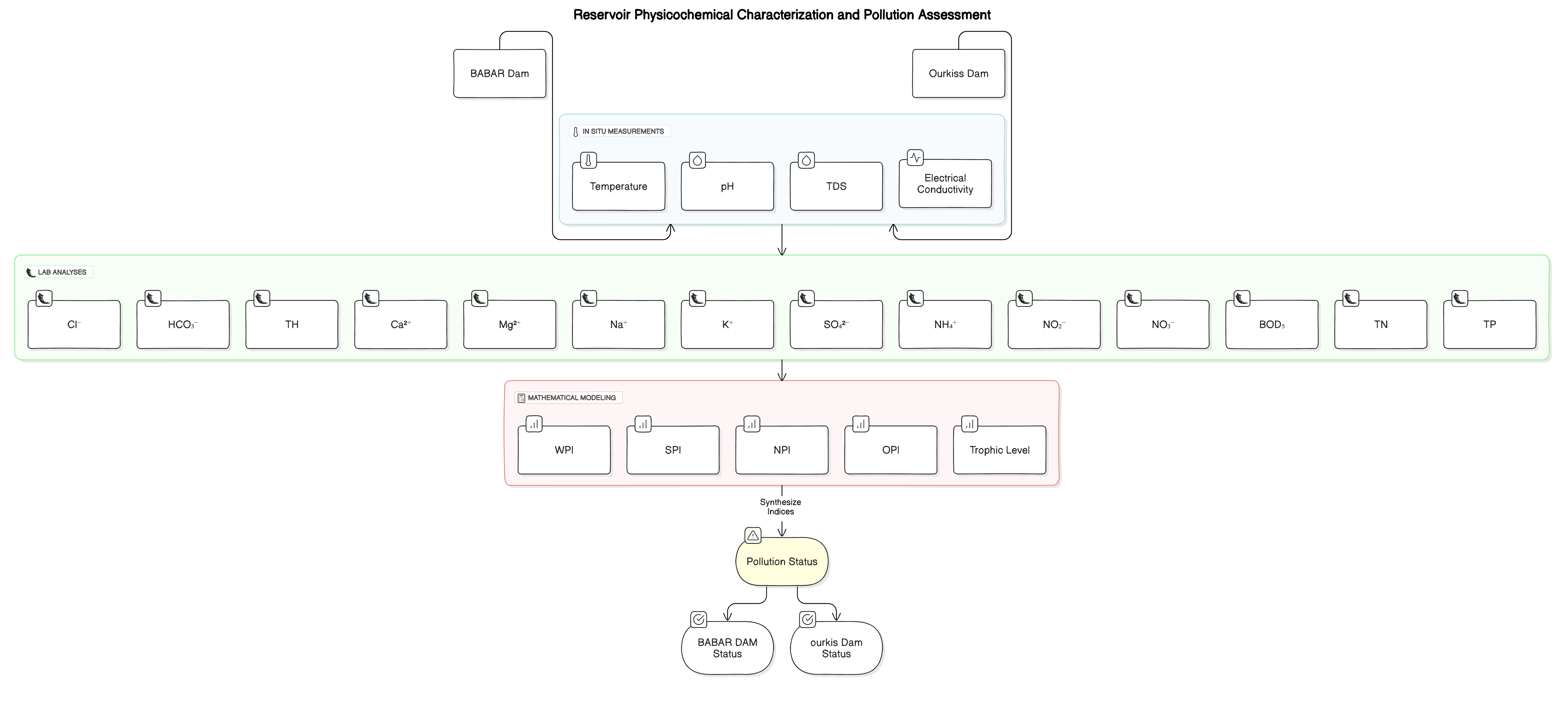
This study investigates surface water pollution in two dams in northeastern Algeria: Ourkiss Dam in Oum El Bouaghi Province and Babar Dam in Khenchela Province, over a year (March 2023 to February 2024). The research assesses pollution levels, organic contamination, and nutrient status using several indices. The Water Pollution Index (WPI) indicated high pollution at 80% of Ourkiss Dam sites in spring, winter, and autumn, while 25% of Babar Dam sites were highly polluted in spring. Both dams showed moderate pollution levels in the remaining seasons. The Synthetic Pollution Index (SPI) classified all sites in both dams as moderately polluted year-round. The Nutrient Pollution Index (NPI) revealed no pollution in 25% of Ourkiss Dam sites and 75% of Babar Dam, while 70% and 25% of sites, respectively, experienced moderate pollution, with 5% of Ourkiss Dam severely polluted. The Organic Pollution Index (OPI) showed that 80% of Ourkiss Dam and 75% of Babar Dam sites were highly polluted. The Total Nitrogen to Total Phosphorus (TN) ratio classified 70% of stations at Ourkiss Dam as hypertrophic, 25% as mesotrophic, and 5% as eutrophic. Babar Dam had 60% hypertrophic, 15% mesotrophic, and 25% eutrophic stations. These results highlight significant pollution issues, particularly in Ourkiss Dam, and provide critical insights into the water quality and pollution management needs of both dams
Total file downloads: 40